Archives
-
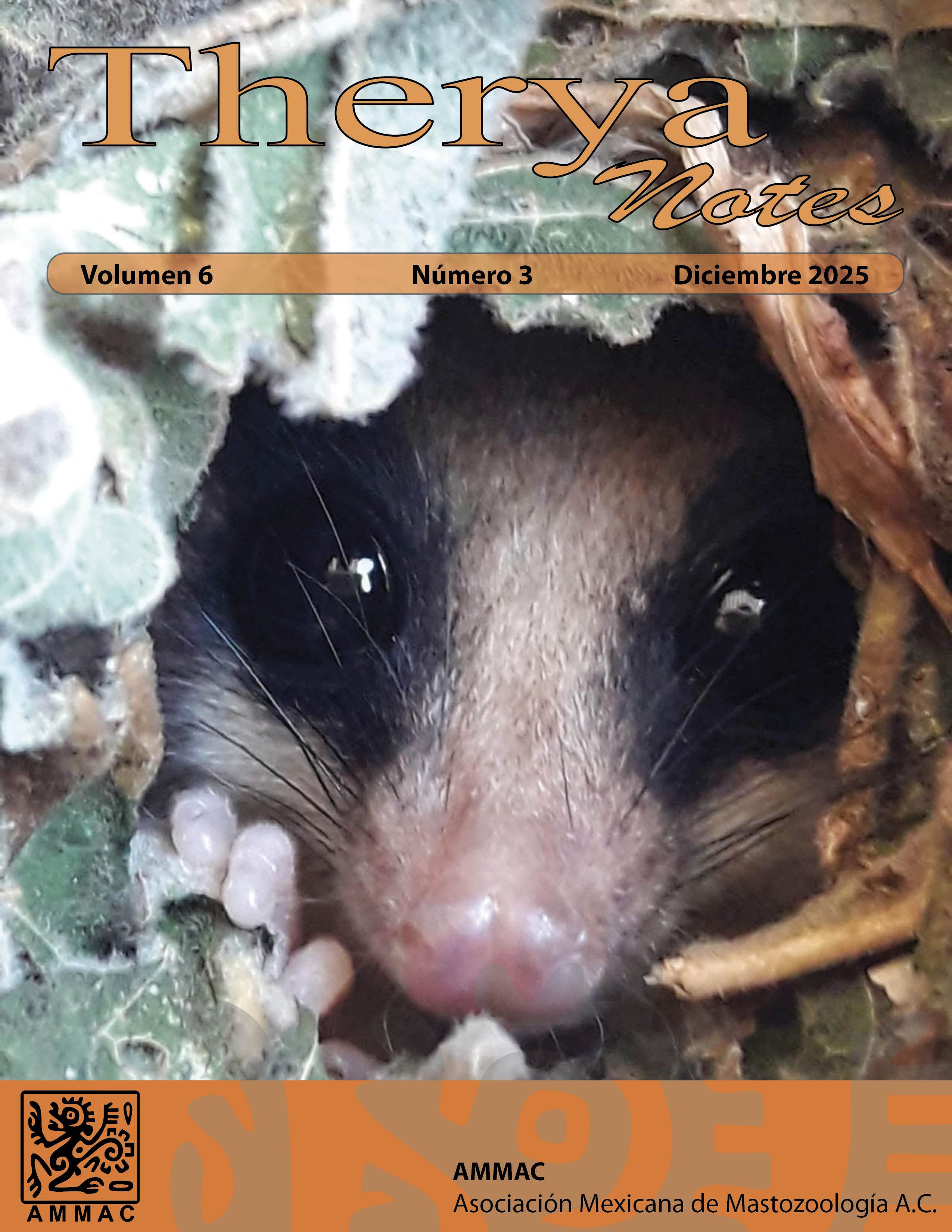
Vol. 6 No. 3 (2025)
Like most small mammals, mouse opossums of the genus Tlacuatzin build their own nests or reuse pre-existing shelters to breed, protect themselves, and rest. This issue reports the first record of an individual of Tlacuatzin balsasensis nesting in a wasp comb in the Mixteca region, Oaxaca (Mexico).
(Photograph by Aketzali Martínez Martínez) -
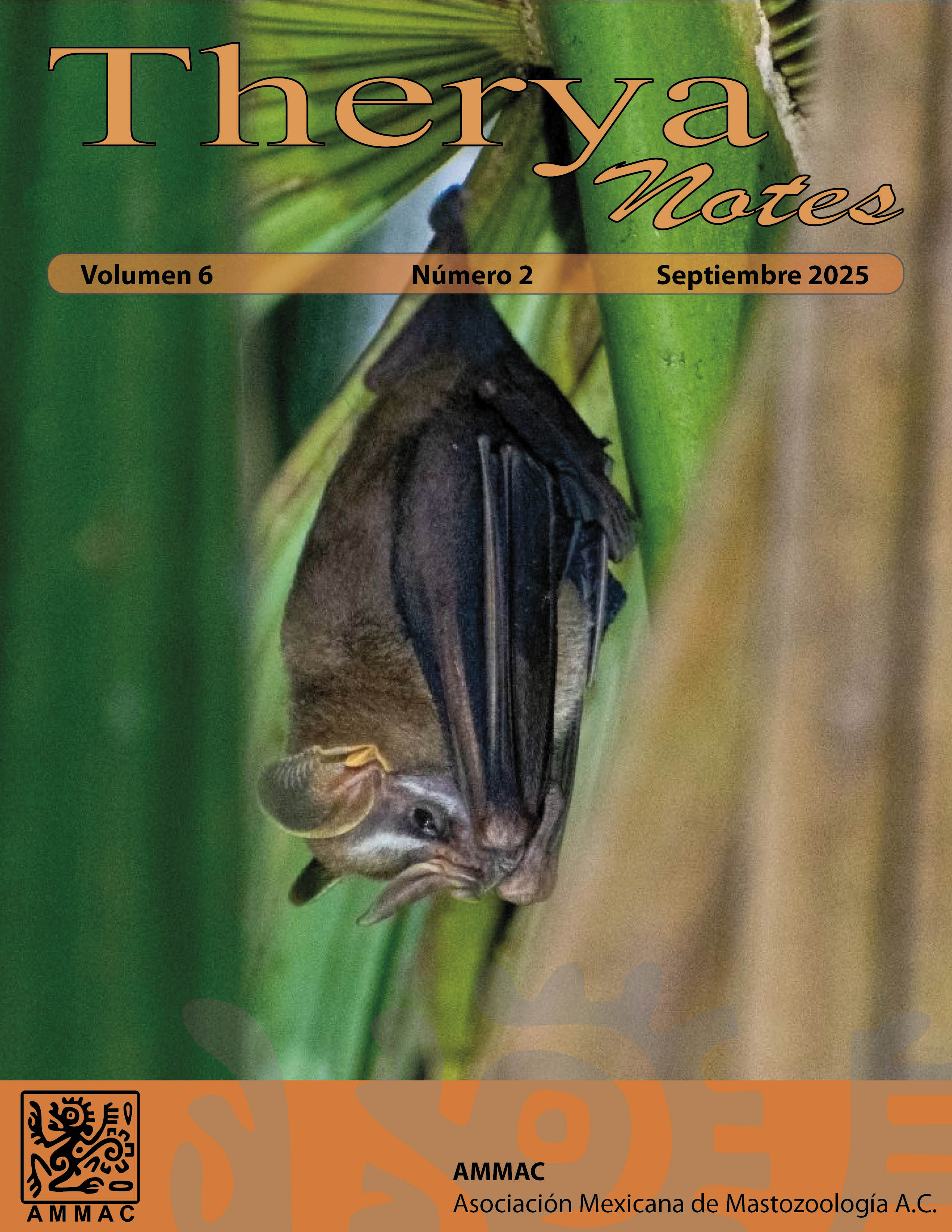
Number 2
Vol. 6 (2025)Some leaf-nosed bats in the American Tropics make their own roosts by chewing on leaves or palm fronds to create tents. Despite the presence of tent-roosting species in the area, this behavior is poorly-known in Central America. This issue presents details about tent-roosting behavior by Artibeus jamaicensis and Dermanura sp. in Guatemala, including tent densities and new records of plants used by these bats in Guatemala (Photograph by L. Trujillo)
-
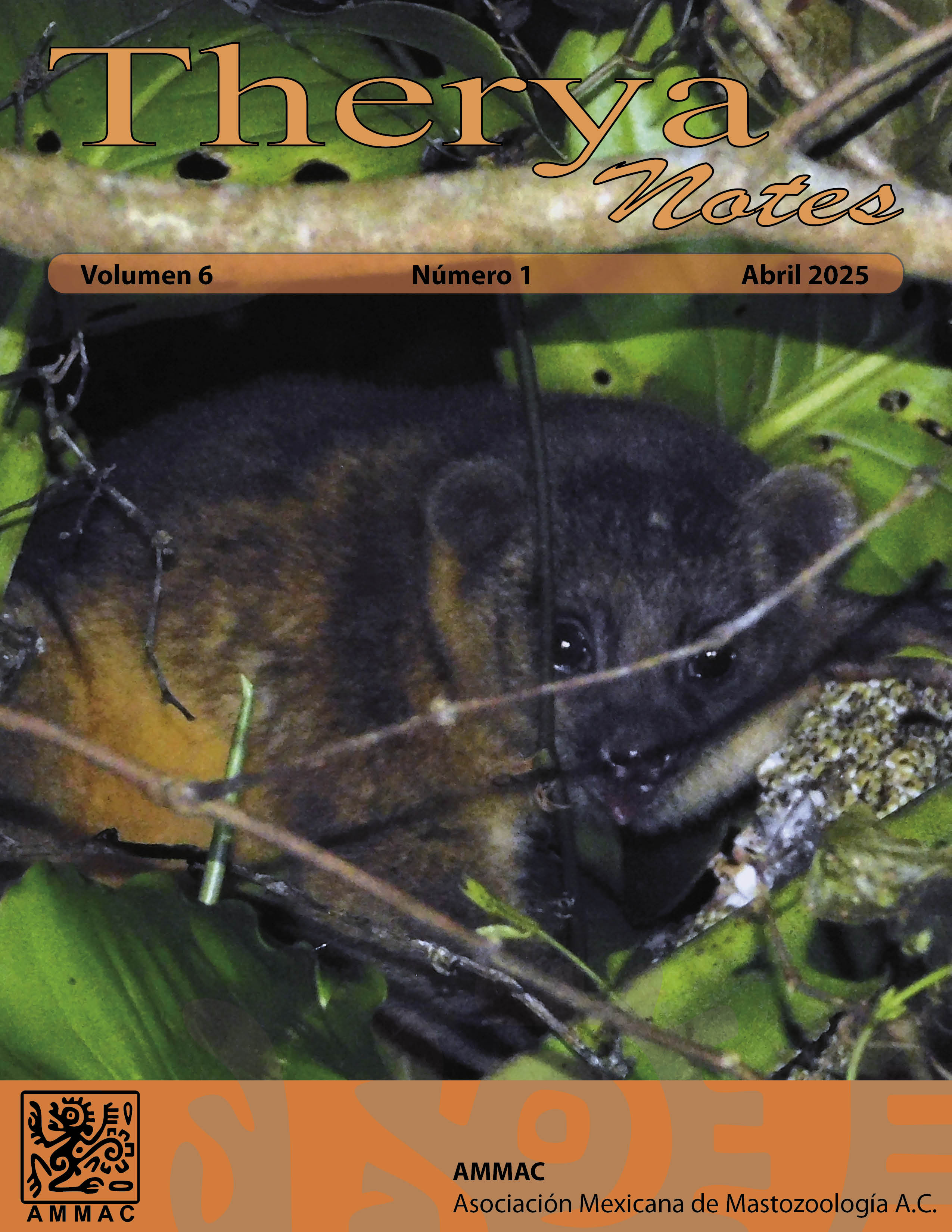
Number 1
Vol. 6 (2025)The kinkajou, Potos flavus, is a medium-sized arboreal mammal that feeds mainly on fruits, flowers, nectar, and leaves. There are records of its consumption of fruits and other parts from 119 plant species belonging to 50 families, but reports of consumption of plants from the Araceae family are scarce. This issue presents the first record of consumption of the araceous plant Monstera egregia by a kinkajou specimen.
(Photograph by Martín Alarcón Montano)
-
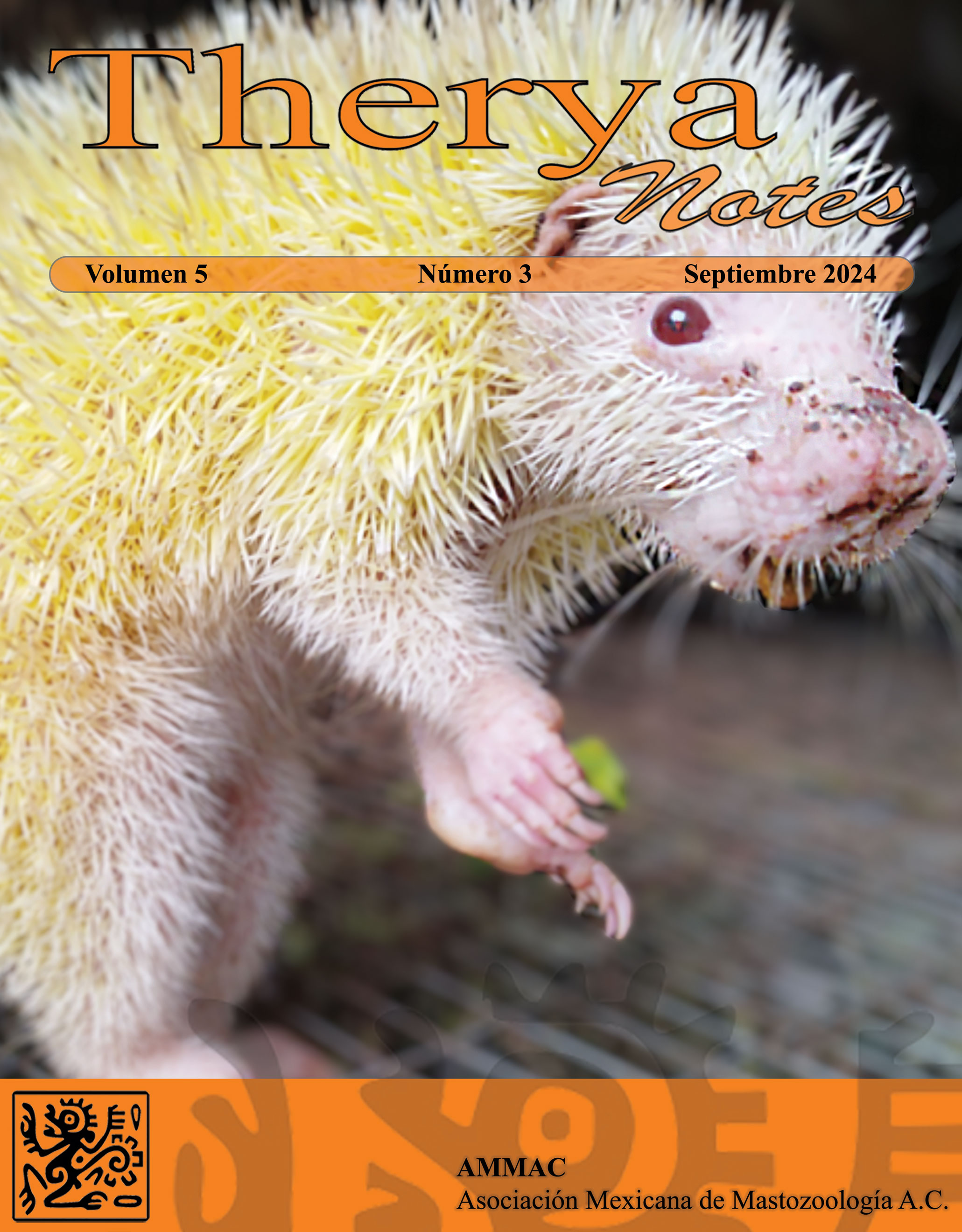
Número 3
Vol. 5 (2024)Anomalous coloration is a phenomenon regularly observed in mammals, however, in the case of albinism, this is a relatively rare condition; for example, less than 2% of rodent species have reports of this condition. This issue presents the first report of a case of albinism in a porcupine of Coendou quichua, based on a specimen captured in northwestern Ecuador.
(Photograph by J. Crespo) -
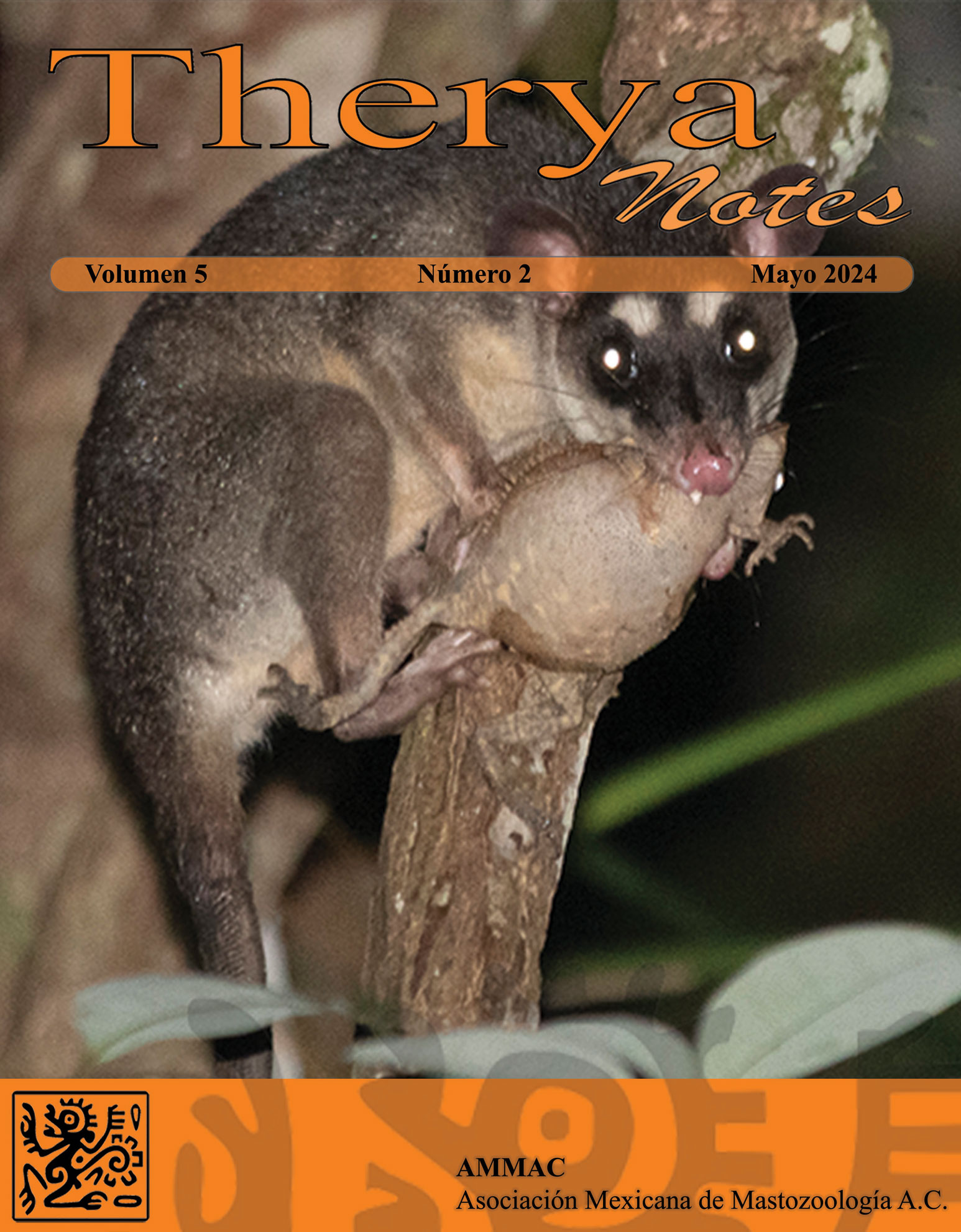
Number 2
Vol. 5 (2024)Species of Philander occur in tropical and subtropical forests. Some species have a diet consisting of arthropods, the species within the genus are considered opportunistic vertebrate predators. Information about the natural history, ecology, and behavior of this genus is still scarce. Here, we present the first documented case of predation on the Rhinella margaritifera by Philander pebas in the Amazonian floodplain forest.
(Photography by M. R. Negreiros Almeida) -
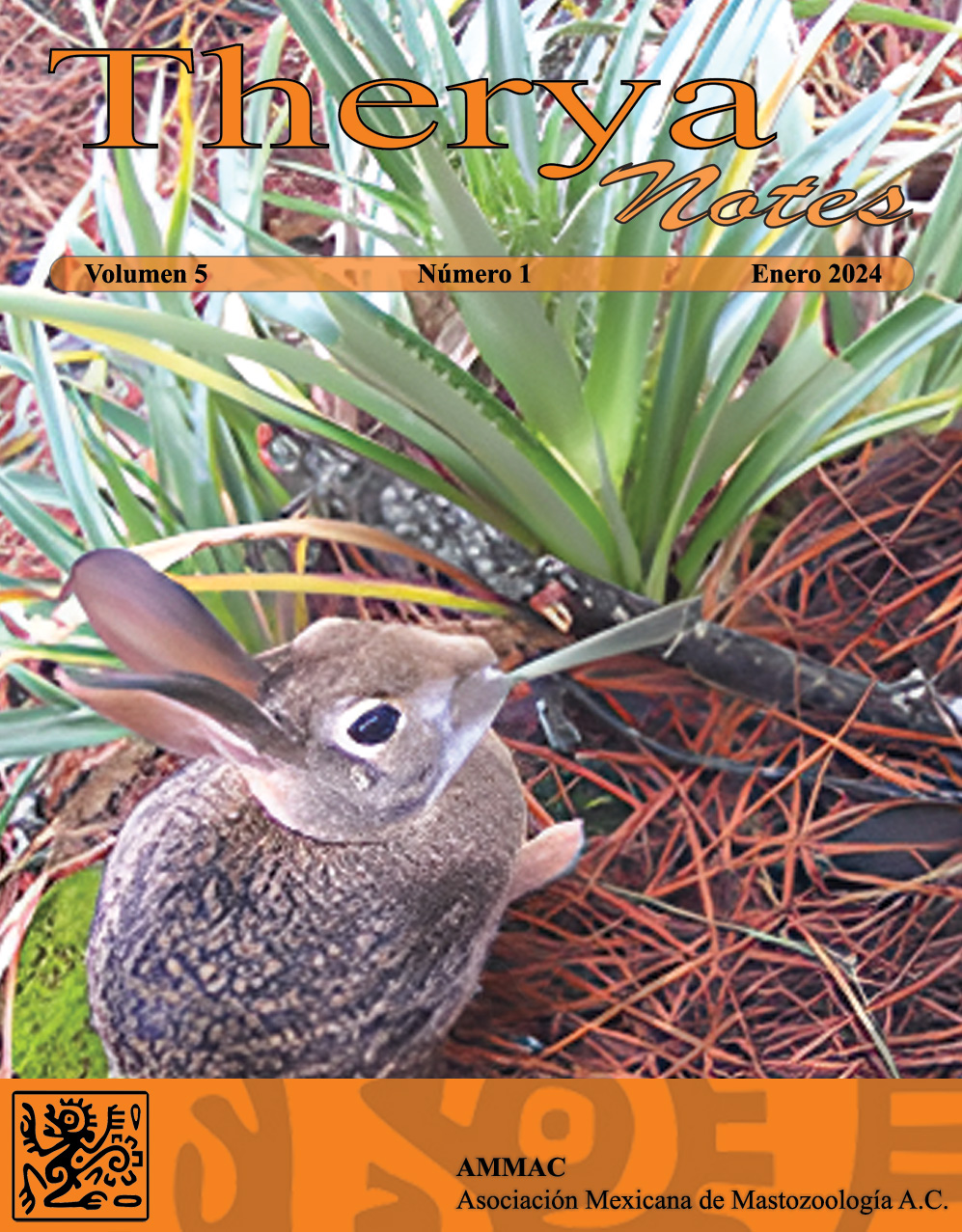
Number 1
Vol. 5 (2024)Despite its abundance and important role in ecosystems, the diet of the Mexican cottontail, Sylvilagus cunicularius, has not been studied enough. Previous studies report only the consumption of Poaceae species by this cottontail. In this note, we report the consumption of Eryngium proteiflorum by the Mexican cottontail at Pico del Águila located on top of the Ajusco volcano, México City, México. Cottontails consume E. proteiflorum leaves from the base to avoid spikes, and they use this source of food all year. Therefore, E. proteiflorum could be an important source of nutrition for cottontails, and they appear to be important consumers of this plant.
(Photography by Glebskiy et al., 2024) -
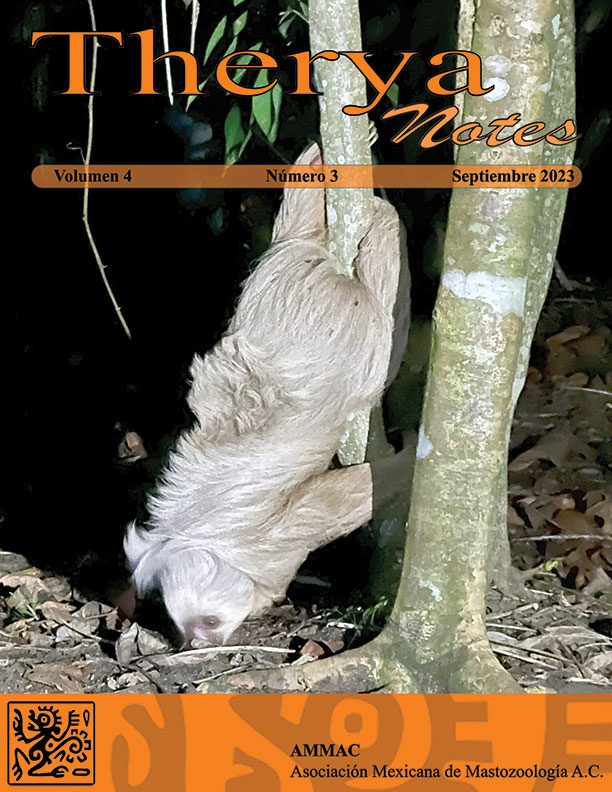
Number 3
Vol. 4 (2023)Mineral licking has been reported in most herbivorous mammal taxa; however, the frequency of mineral lick use by Pilosa at ground level in the wild is rare. Ho!mann's two-toed sloth (Choloepus ho!manni), an herbivorous Pilosa species, is nocturnal and arboreal. We present the first case of saline sand consumption by a Ho!mann's two-toed sloth in Costa Rica.
(Photograph by Durán-Apuy and Mora 2023) -
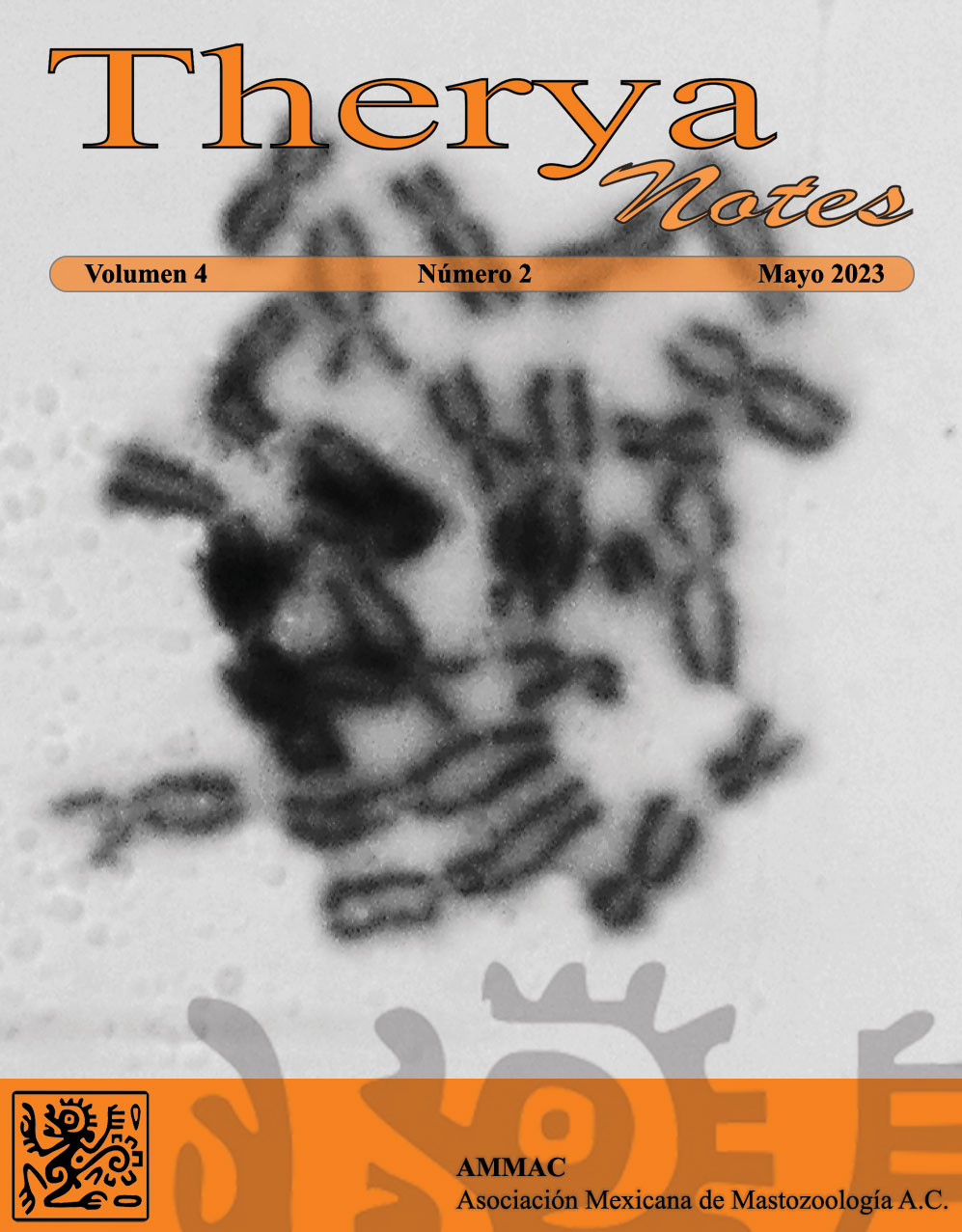
Number 2
Vol. 4 (2023)To know and conserve Mexican shrews it is necessary to know them well, although their taxonomic identification is difficult. However, cytogenetic tools can help to discriminate species. In the picture, chromosomes in metaphase of a male big Mexican small-eared shrew (Cryptotis magnus) are shown, viewed photomicroscopically at 100x.
(Image by Cervantes et al. 2023) -
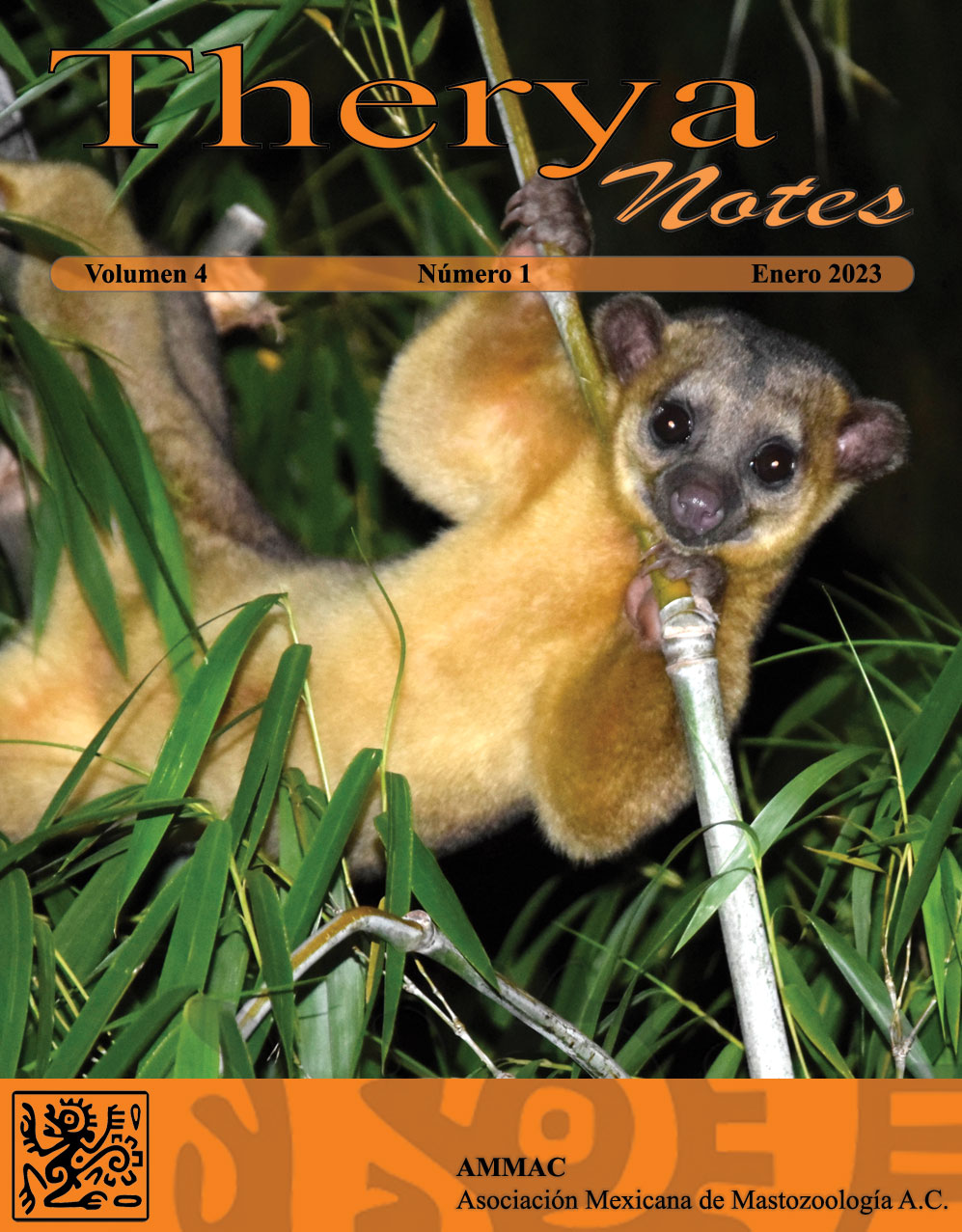
Number 1
Vol. 4 (2023)Forest fragments that still persist within anthropized environments play a fundamental role in the conservation of different animal species. Different organisms use forest fragments as permanent habitats or as passage corridors within agro-landscapes. The image shows a specimen of Potos flavus in its habitat.
(Photography by Mopan-Chilito et al. 2023) -

Number 3
Vol. 3 (2022)The common sea lion Otaria byronia is widely distributed in South America from Peru through Chile to Brazil in the Pacific and Atlantic oceans, respectively. It is an abundant and very vagile species. Like all pinnipeds, it exhibits remarkably seasonal and synchronized reproduction with slight differences between populations. This issue includes a note that provides a detailed description of a copulation event recorded on the central coast of Chile.
(Photography by J. A. Guzmán) -

Number 2
Vol. 3 (2022)The construction of large infrastructures such as roads poses a major threat to biodiversity due to wildlife roadkills. Some of the underlying threats are easy access for hunters, habitat degradation around the road caused by agricultural activities, oil and gas extraction, and mining. Altogether, these result in serious risk for many mammal species. Particularly, the population of Alouatta pigra underwent a 56 % decline from 2012 to 2017, with 37 roadkills.
(Photography by Pozo-Montuy et al. 2022) -
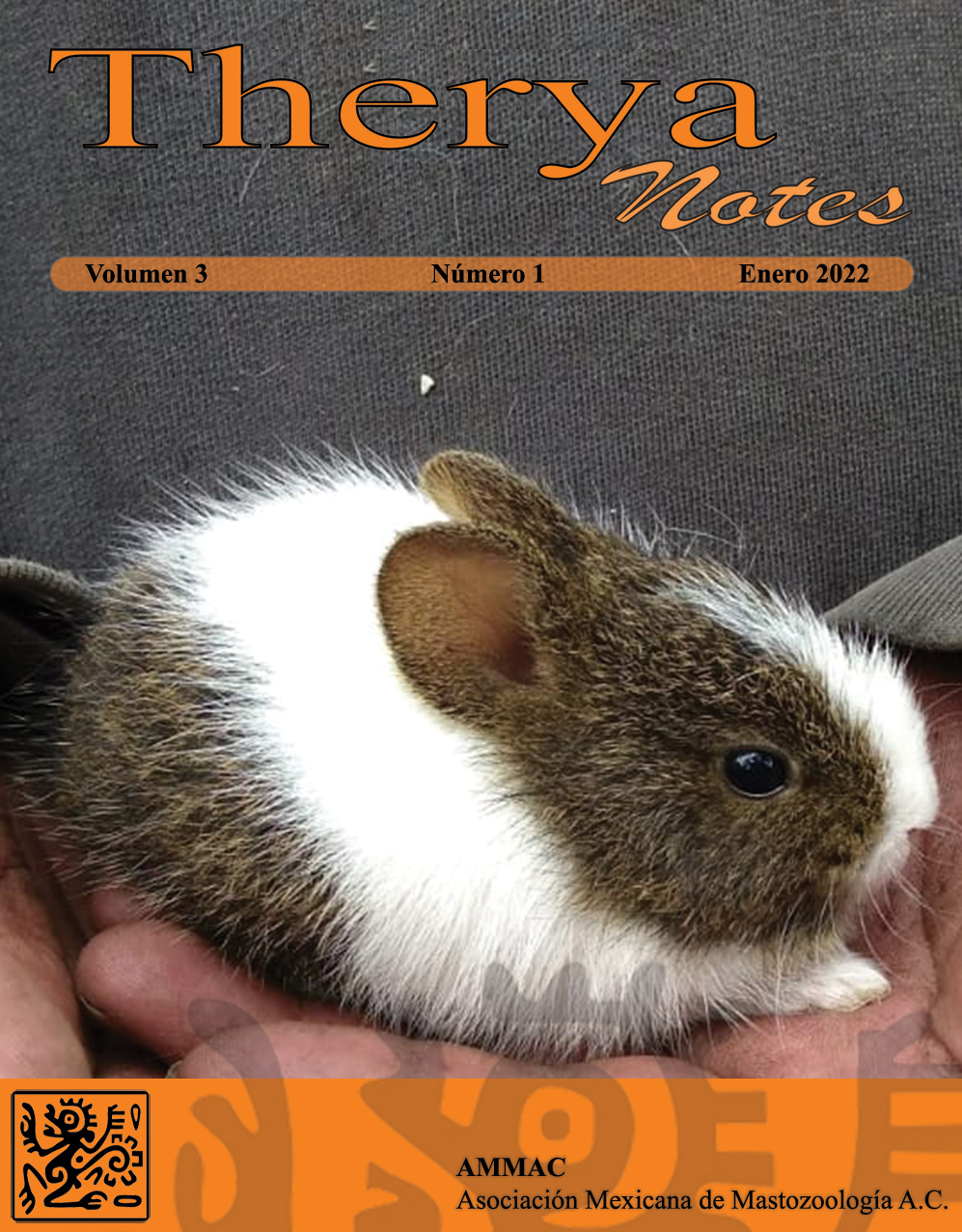
Number 1
Vol. 3 (2022)Leucism is the total or partial loss of the pigmentation of the fur or plumage without affecting the color of the eyes, skin, and nails. During one of the daily surveillance and protection tours carried out by the Teporingos 1 community brigade, a leucistic juvenile zacatuche was recorded within the San Miguel Topilejo Community Ecological Reserve of México City, México. This note reports the first record of leucism in Romerolagus diazi and discusses the relevance of this finding.
(Photography by Teporingos 1 community brigade) -

Number 3
Vol. 2 (2021)Female adult specimen of Lasiurus arequipa. Features of the pelage, coloration, and cranial structures are noted.
(Photography by Mamani-Contreras and Aragón-Alvarado 2021) -
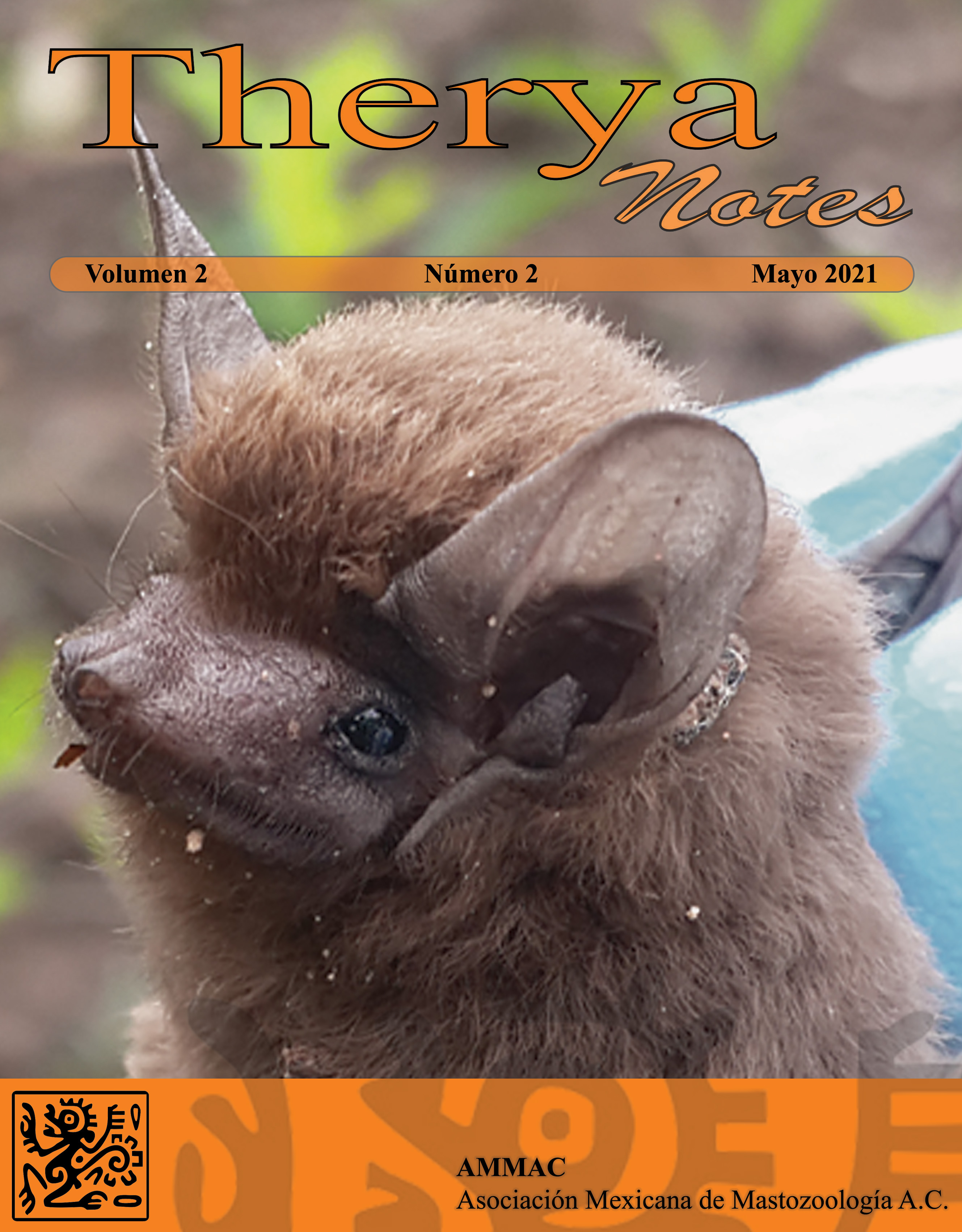
Number 2
Vol. 2 (2021)The genus Peropteryx contains five species distributed in the Neotropical region. Three of these species occur in Bolivia (P. macrotis, P. kappleri, and P. leucoptera). The recently described Peropteryx pallidoptera is distributed in the Amazonian lowland forests of Ecuador, Perú, Brazil, and Colombia. We report the first record of P. pallidoptera in Bolivia. The image shows a lateral view of this species.
(Photograph by A. Amusquivar-Calustro) -
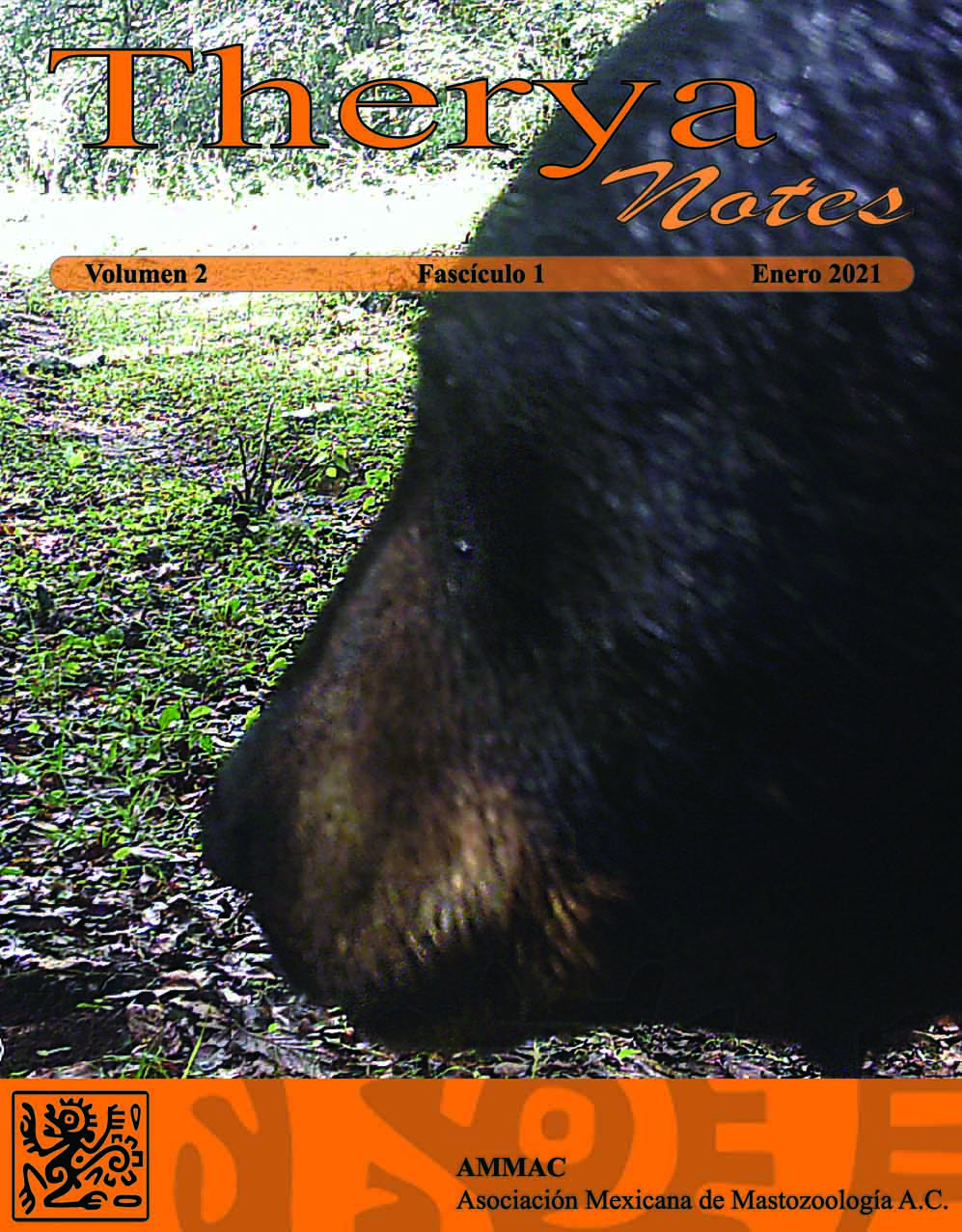
Number 1
Vol. 2 (2021)The distribution range of the black bear (Ursus americanus) in México showed a significant reduction in the 20th century. However, growing evidence of its presence in areas outside the known range of distribution has emerged in recent years. Recent monitoring efforts made it possible to detect black bears in the states of Guanajuato, Querétaro, and San Luis Potosí, in Mexico, in an area close to the southernmost distribution for this species in the American Continent. The presence of black bear in central-eastern México points to the need for closer systematic monitoring of biodiversity in the SMO and protected areas of the region through monitoring and conservation programs.
(Photograph by Charre-Medellín et al. 2021) -
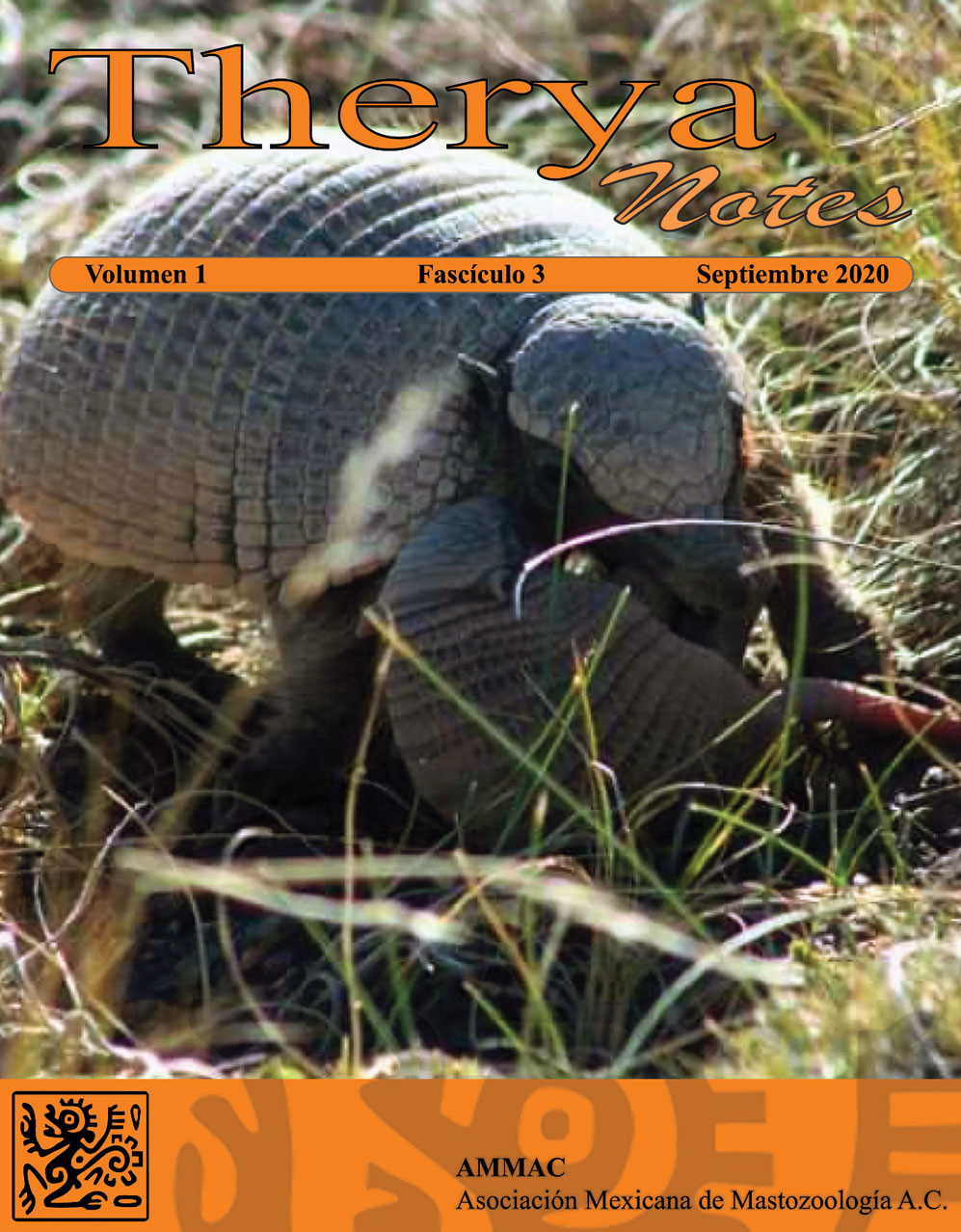
Number 3
Vol. 1 (2020)Armadillos are the only extant mammals characterized by bony shielded regions that protect their head, body, and tail. Parental care are practically unknown among these species. This contribution describes and document for the first time (both by photos and video) the carrying of young offspring by Chaetophractus villosus and Zaedyus pichiy at different locations of Argentina and Chile.
(Photograph by A. Castro) -
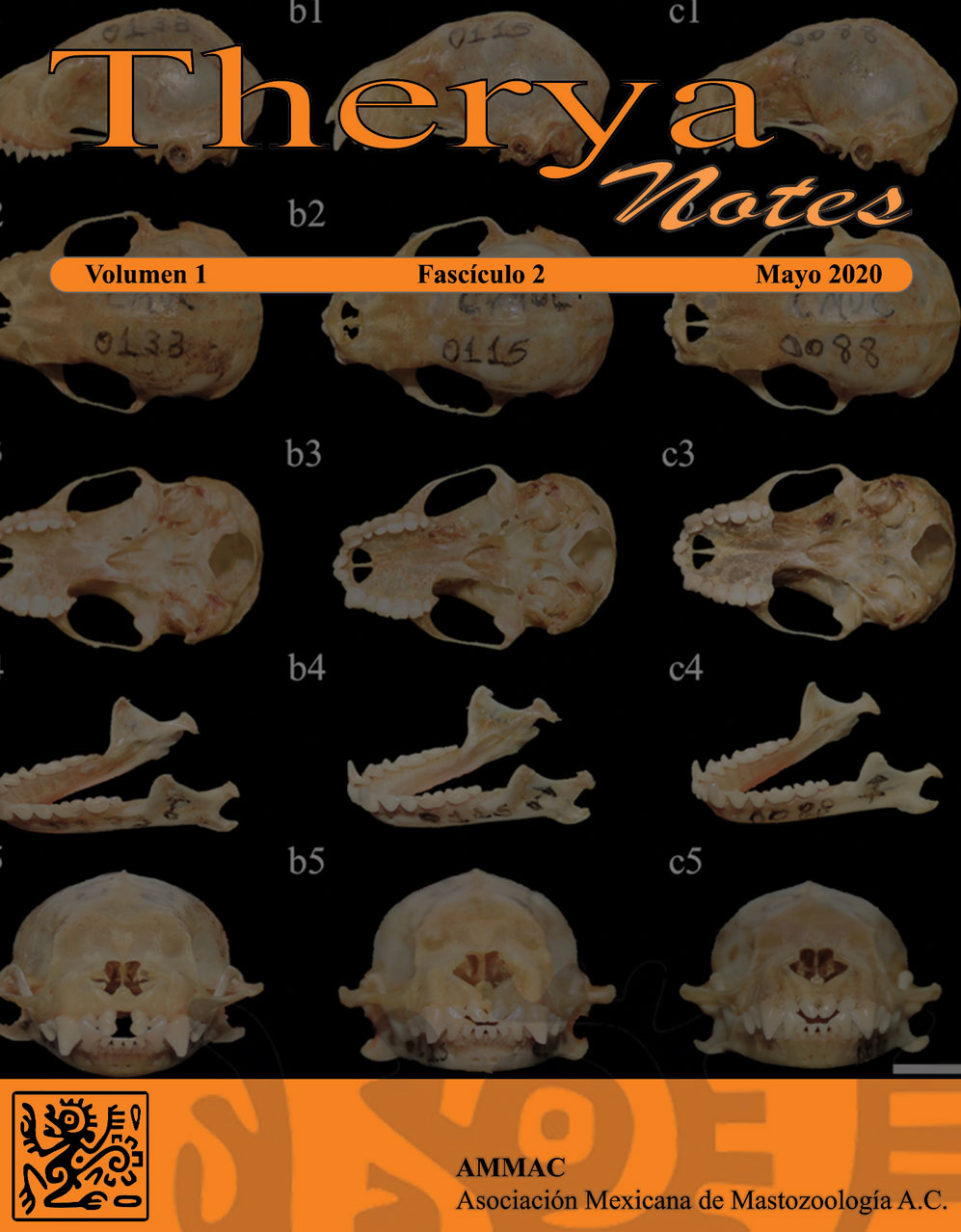
Number 2
Vol. 1 (2020)Abnormal dental formulas occur frequently in natural populations. Numerous cases of dental anomalies have been reported for many groups of mammals, and bats are the group with most dental anomalies among mammals. Here the occurrence of a diastema in the position of the upper incisors in an individual of Sturnira lilium collected in southern Brazil is described. This is the first record of a diastema for the species.
(Image by Liposki-Biassi et al. 2020) -
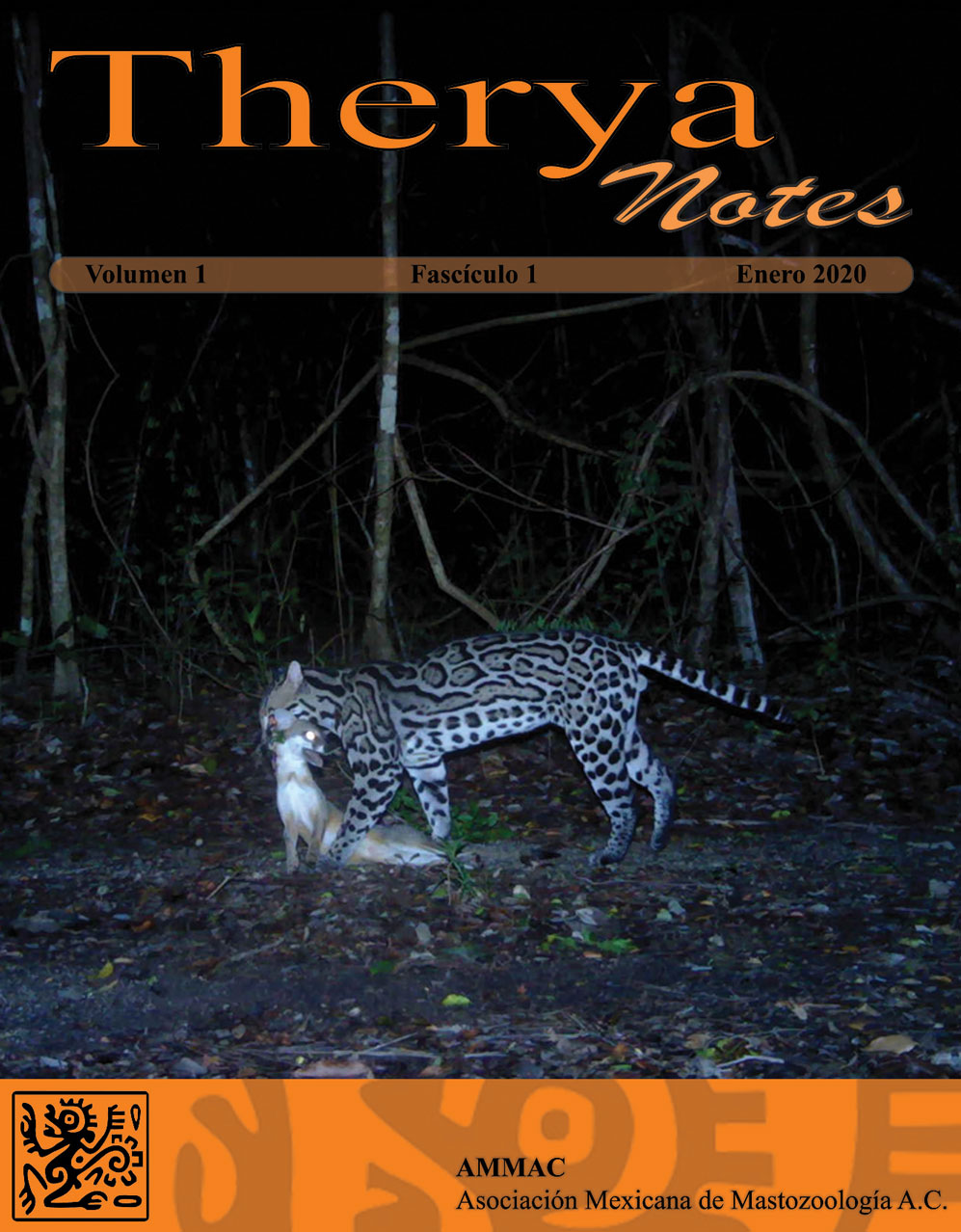
Number 1
Vol. 1 (2020)Gray fox (Urocyon cinereoargenteus) are commonly killed by other carnivores which can cause local population reductions. In tropical forests, the potential predators of gray fox are mostly large and medium sized felids. As part of a biodiversity survey using camera traps in the Yucatán Peninsula, an ocelot (Leopardus pardalis) carrying a gray fox in its mouth was recorded.
(Photograph by Hidalgo-Mihart et al. 2020)










